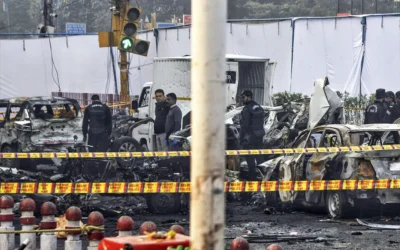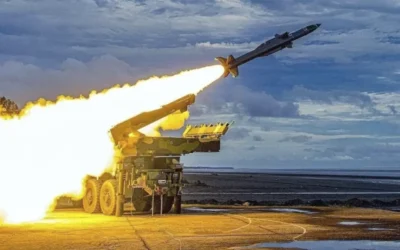The Indian Space Research Organisation (ISRO) will launch three new navigation satellites—NVS‑03, NVS‑04, and NVS‑05—for its Indian Regional Navigation Satellite System (IRNSS), also known as NavIC, by next year. This was confirmed in a recent reply to Parliament by Union Minister of State for Space, Dr. Jitendra Singh.
What is IRNSS/NavIC?
IRNSS is a regional satellite navigation system developed by ISRO to provide accurate positioning services across India and a 1,500 km radius beyond its borders. It was originally planned as a seven-satellite constellation.
However, of the 11 satellites launched so far for NavIC:
- 2 failed to reach their correct orbit (including NVS‑02, which launched in January 2025 but could not complete orbit-raising due to a technical glitch).
- IRNSS‑1H failed during launch in 2017 when the heat shield did not open.
- 1 satellite was decommissioned after completing its mission life.
- 4 satellites are now only used for one-way messaging, like broadcasting alerts during natural disasters.
- Only 4 satellites are currently active and providing real-time location services.
Why the New Launches Are Crucial
With fewer than half of the original satellites actively providing location data, the system needs reinforcements to maintain reliability and accuracy. The new satellites—NVS‑03 to NVS‑05—are part of the second-generation NavIC series.
These updated satellites are expected to:
- Support additional navigation frequencies (like L1, L5, and S-band)
- Improve signal coverage and strength
- Enhance performance for low-power devices such as smartphones and wearables
- Use indigenous atomic clocks, boosting India’s self-reliance in satellite navigation tech
Launch Timeline Overview
| Satellite | Expected Launch | Status |
|---|---|---|
| NVS‑03 | End of 2025 | Scheduled |
| NVS‑04 | Mid-2026 | ~6 months after NVS-03 |
| NVS‑05 | Late 2026 | ~6 months after NVS-04 |
Strategic Importance
These launches are not just technical upgrades—they are critical for national positioning independence. Strengthening NavIC ensures that India does not have to rely on foreign systems like the US GPS or China’s BeiDou, especially during high-security situations.
Reliable and high-accuracy navigation is also essential for:
- Transportation and logistics
- Disaster management
- Military operations
- Personal navigation through phones and smart devices
ISRO’s plan to launch NVS‑03, NVS‑04, and NVS‑05 by 2026 is a major step toward restoring and upgrading India’s regional navigation system. With only four satellites currently offering real-time data, these second-generation launches will bring new accuracy, resilience, and technological strength to the NavIC program—ensuring that India’s positioning needs are met without outside dependence.
Discover more empowering stories and insightful content like this on YOUxTalks, your go-to destination for inspiration and knowledge.
Follow YOUxTalks on Instagram: https://www.instagram.com/youxtalks











